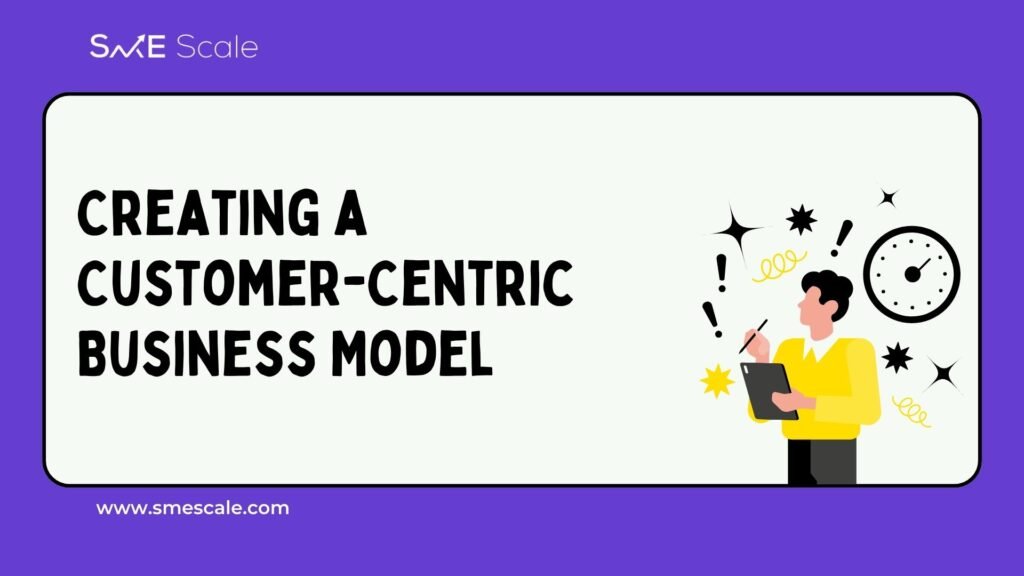
In today’s competitive landscape, small and medium-sized enterprises (SMEs) must prioritize their customers to stand out. A customer-centric business model focuses on understanding and addressing customer needs at every touchpoint, building loyalty, and driving long-term growth. At SME Scale, we believe that putting customers at the center of your strategy is not just a trend—it’s the key to sustainable success.
In this blog, we’ll explore the principles of a customer-centric approach, delve into the psychology behind customer loyalty, and present a real-life case study to highlight how SMEs can benefit from this transformative strategy.
What is a Customer-Centric Business Model?
A customer-centric business model prioritizes delivering value and creating exceptional experiences for customers. It involves aligning your products, services, and operations to meet customer needs and exceed expectations.
Core Principles:
Customer Understanding: Use data and feedback to understand customer pain points, preferences, and behaviors.
Proactive Engagement: Anticipate customer needs and address them before they arise.
Personalization: Tailor your offerings to individual customers for a unique experience.
Continuous Improvement: Use insights and analytics to refine and improve your processes over time.
The Psychology Behind Customer-Centricity
The success of a customer-centric approach is deeply rooted in psychology:
Reciprocity Principle: Customers are more likely to remain loyal to businesses that provide exceptional value and care.
Emotional Connection: Building trust and emotional connections with customers fosters long-term loyalty.
Decision-Making Ease: A seamless and intuitive customer experience simplifies decision-making, leading to increased satisfaction.
Social Proof: Positive experiences encourage word-of-mouth marketing, attracting new customers.
Case Study: Building a Customer-Centric Business with SME Scale
Scenario:
EcoBloom, an SME specializing in eco-friendly home and garden products, struggled to retain customers despite offering high-quality products. Their one-size-fits-all approach failed to address the diverse needs of their target audience.
The SME Scale Approach:
EcoBloom partnered with SME Scale to transform their business model into a customer-centric one. Here’s how we helped:
Customer Insights Gathering:
Conducted surveys and analyzed purchase data to understand customer demographics, preferences, and pain points.
Identified a demand for personalized gardening solutions and better after-sales support.
Redesigning the Business Model:
Introduced a subscription service for seasonal gardening kits tailored to customers’ regional climates and preferences.
Launched an online community where customers could share gardening tips and ask questions, fostering engagement.
Marketing Transformation:
Crafted targeted email campaigns offering tips and product recommendations based on customer data.
Partnered with micro-influencers in the gardening niche to build credibility and attract new customers.
Customer Feedback Loop:
Implemented a system to collect continuous feedback, ensuring customer voices were integral to product development.
Results:
Increased Retention: Customer retention rates improved by 35% within six months.
Revenue Growth: Subscription service revenue grew by 50%, accounting for a significant portion of overall sales.
Customer Advocacy: Positive experiences led to a 20% increase in referrals and glowing online reviews.
Brand Loyalty: Customers cited the personalized approach and community engagement as key reasons for sticking with EcoBloom.
How to Build a Customer-Centric Business Model
Start with Data:
Leverage tools like AI-powered insights from SME Scale to analyze customer behavior and preferences.
Foster Open Communication:
Use surveys, feedback forms, and social media to maintain a dialogue with your customers.
Invest in Personalization:
Tailor your marketing messages, products, and services to individual customer needs.
Empower Your Team:
Train employees to prioritize customer satisfaction and resolve issues proactively.
Continuously Improve:
Regularly evaluate your customer experience and adapt based on feedback and trends.
SEO Keywords in Action
This blog integrates essential SEO keywords like customer-centric business models for SMEs, enhancing customer experience for small businesses, case study on customer retention strategies, and personalization in marketing for SMEs. These ensure the blog reaches SMEs seeking actionable advice online.
Conclusion: Put Customers at the Heart of Your Business
Creating a customer-centric business model isn’t just about meeting expectations—it’s about exceeding them. By understanding your customers, personalizing their experiences, and consistently improving your offerings, you can foster loyalty, increase revenue, and drive long-term success.
At SME Scale, we specialize in helping SMEs transition to customer-centric strategies through data-driven insights, innovative marketing methods, and expert guidance. Let us help you create a business that truly puts customers first.

